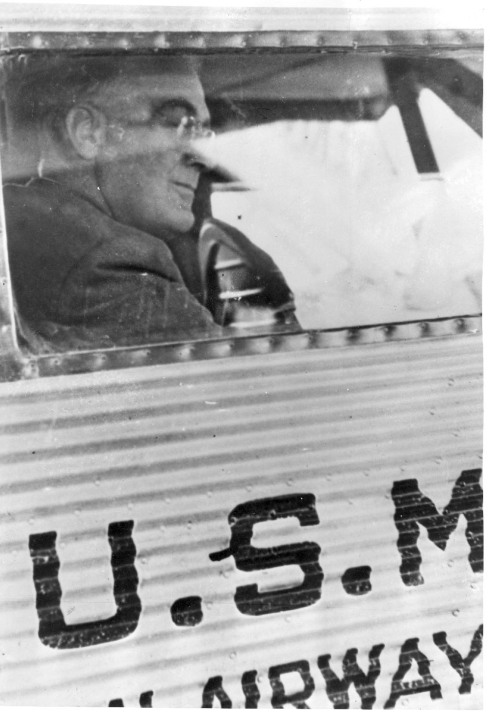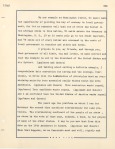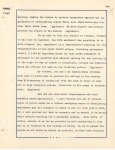You are currently browsing the tag archive for the ‘New Deal’ tag.
The Washington Star published this political cartoon by Pulitzer Prize-winning cartoonist Clifford Berryman on October 31, 1934. The parade of jack-o-lanterns asking, “FDR, how long will the cash hold out?” refers to expenditures by President Roosevelt’s New Deal “alphabet agencies.” These agencies, often referred to by their acronyms, were created to reform the nation’s financial system, stimulate job and business growth, and provide material assistance to Americans enduring the Great Depression. By the fall of 1934, they included the Civilian Conservation Corps (CCC), the Federal Deposit Insurance Corporation (FDIC), the Public Works Administration (PWA) and the National Recovery Administration (NRA). Several examples of the NRA’s distinctive eagle symbol hover over the parade of jack-o-lanterns.
Berryman presented this original cartoon to FDR’s Secretary of the Treasury Henry Morgenthau, Jr. (who appears next to FDR in the cartoon). The Morgenthau family later gave the cartoon the Roosevelt Library.
The New Deal is all around us!!!
On a recent trip to New England, a Roosevelt Library staff member couldn’t help but notice the enduring and ubiquitous legacy of the New Deal all around.
 While walking in the Brown University section of Providence, Rhode Island, a simple glance downward discovered a brass marker embedded into the sidewalk.
While walking in the Brown University section of Providence, Rhode Island, a simple glance downward discovered a brass marker embedded into the sidewalk.
Between 1935 and 1938, the WPA built the very sidewalks being walked on by today’s Rhode Islanders.
 In a side trip to the Culinary Arts Museum at Johnson & Wales University, a behind the scenes tour revealed an apple crate with the placard “New Deal Northwest Apples” produced by the Adams Fruit Company.
In a side trip to the Culinary Arts Museum at Johnson & Wales University, a behind the scenes tour revealed an apple crate with the placard “New Deal Northwest Apples” produced by the Adams Fruit Company.
And the enduring legacy of the New Deal can even be found in Kennedy country. The beautiful Post Office in Hyannis, Massachusetts, was built by the Treasury Department’s public buildings program in 1937 and is still in use today.
So wherever you go, look for the impact that the New Deal still has on our infrastructure and popular culture. You’ll be surprised at how much there is and let us know what else you find!
The Great Hurricane of 1938: Government and Citizens Working Together
As Hurricane Irene bears down on the East Coast of the United States, it brings to mind the Great Hurricane of 1938 that brought devastation to Long Island, Connecticut, Rhode Island, and Massachusetts. On September 21, 1938, entire coastal communities were simply swept off the map and into the sea. Some 700 people died in the storm and hundreds more were injured. Rhode Island was particularly hard hit by the winds and the storm surge. Two billion trees across New York and New England were ripped from the ground, leveling old growth forests.
Before FDR, such a disaster would have been responded to only by local authorities and private aid groups such as the Red Cross. But thanks to the New Deal, thousands of Americans were employed through the Works Progress Administration, the National Youth Administration, and the Civilian Conservation Corps and were readily mobilized to assist in short-term rescue and recovery and long-term rebuilding efforts. 
On October 14, 1938, President Roosevelt used his annual radio address for the Mobilization for Human Needs charity campaign to talk about the importance of the partnership between private organizations and the government. The two are not mutually exclusive, FDR pointed out. Working together, the government and private citizens can respond more effectively to disasters such as the Great Hurricane of 1938, and can better lift up that one-third of a nation still ill-housed, ill-clad, and ill-nourished to a standard of living worthy of America.
The document displayed here is FDR’s reading copy for the radio address he delivered from the White House.
July 2, 1932: FDR accepts the Democratic Party nomination for president at the convention in Chicago; declaring “a New Deal for the American people.”
Franklin D. Roosevelt en route from Albany to Chicago to address the Democratic National Convention and accept the nomination for President.
July 2, 1932
FDR Library Photo Collection. NPx. 61-238.
**********
Did you know:
- On July 5, 1934 FDR landed in Cap Haitien, Haiti becoming the first president to visit Haiti while in office.
- On July 4, 1940 FDR turned over his repository of personal and official papers at the FDR Library in Hyde Park to the government.
July 2, 1932: FDR accepts the Democratic Party nomination for president at the convention in Chicago; declaring “a New Deal for the American people.”
Franklin D. Roosevelt en route from Albany to Chicago to address the Democratic National Convention and accept the nomination for President.
July 2, 1932
FDR Library Photo Collection. NPx. 61-238.
**********
The New Deal Estore is a great place to shop for Roosevelt related books, gifts, and other treasures from the New Deal Store at the Roosevelt Library. Available at www.fdrlibrary.marist.edu, the Estore features everything from a selection of the latest books on the Roosevelts and their times, to T-shirts, ties and caps, multimedia, campaign memorabilia, and museum replicas. For items related to this week’s blog post, follow the links below:
1934: A New Deal for Artists by Ann Prentice Wagner
FDR’s Alphabet Soup, New Deal America 1932-1939 by Tonya Bolden
Franklin D. Roosevelt and the New Deal by William E Leuchtenburg
Nature’s New Deal by Neil M. Maher
The Coming of the New Deal, the Age of Roosevelt by Arthur M. Schlesinger Jr.








